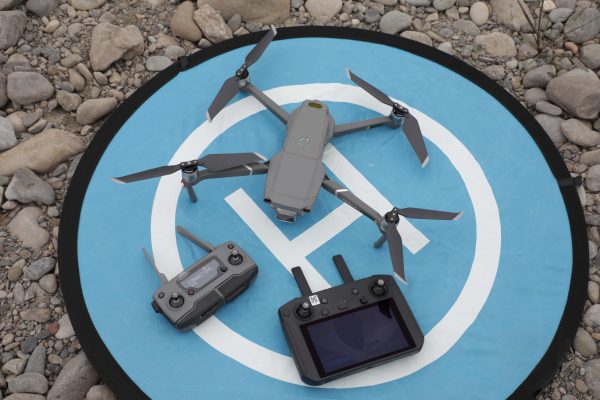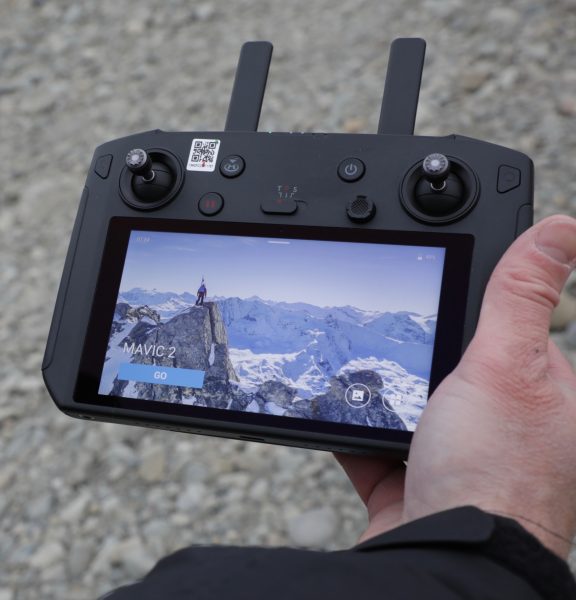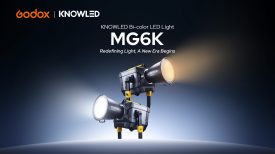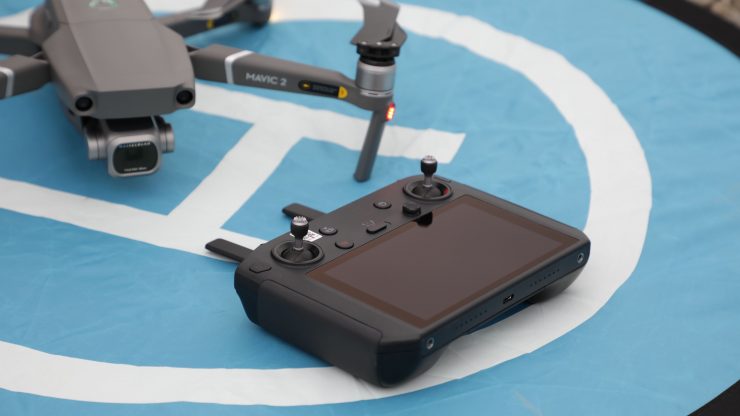
The DJI Smart Controller for the Mavic 2 Pro and Mavic 2 Zoom was just recently announced at CES 2018, and here at Newsshooter, we have been lucky enough to get our hands on one to review.
Why did DJI make it?
DJI made the Smart Controller to take away your dependency on having to use a smartphone or tablet to fly your drone. They also wanted to eliminate having to use multiple components such as the Crystal Sky monitor, a mounting system, cables, and the remote controller if you wanted to have a brighter screen.
The concept behind the Smart Controller is to incorporate multiple components into a single, self-contained unit. I like this idea, but a lot of users may well ask why should I spend more money when I already have a controller and a smartphone? That is a valid point, and there are two schools of thought when it comes to this argument. Almost everyone has a smartphone these days, so it makes a lot of sense to use one with a drone. The problem is we use our smartphones for a lot of things and no one really wants to drain their battery down if they are out in the field with no way of recharging it. Having a stand-alone remote controller with an incorporated screen means you don’t have to rely on your phone.
The other problem when using a smartphone is your screen will inevitably get text messages, email alerts, notifications, and phone calls while you are trying to fly your drone. Again, this is hardly ideal when it comes to safety. There is nothing worse than having to take your fingers off the control sticks while you are doing a critical move to swipe away a notification.
DJI Smart Controller key features
The DJI Smart Controller features a 5.5” screen built into the controller itself. It has been designed so that you no longer need to connect to a mobile device. This makes the whole process of getting your drone up in the air a lot quicker and easier. It can be paired with DJI’s newest drones including the Mavic 2 Zoom and Mavic 2 Pro which use DJI’s OcuSync 2.0 video transmission system. The DJI Smart Controller supports automatic switching between 2.4 GHz and 5.8 GHz, reducing the influence of environmental interference on drone operation and image quality. This also ensures reliable long-range transmission of up to a claimed distance of 8 km.
The ultra-bright display has an output of 1000 cd/m2, twice the brightness of most standard smartphones, and has been optimized for use in direct sunlight. The brightness can be manually and automatically adjusted. When Auto mode is enabled, the DJI Smart Controller will automatically adjust its brightness using a built-in light sensor, making it optimal for the human eye according to the surrounding environment.
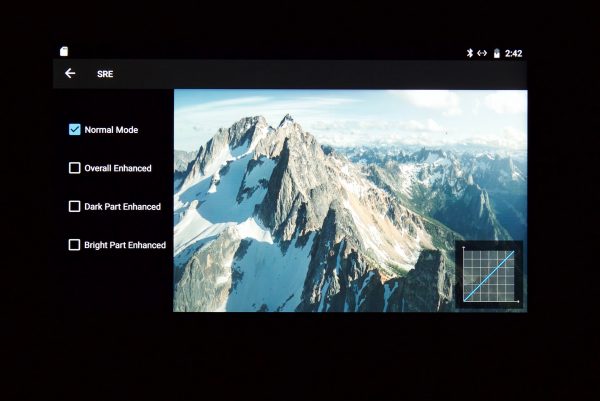
If you go into the settings menu you can actually choose how the screen behaves depending on what conditions you are flying in.
Is it the same screen that is used on the CrystalSky and Phantom 4 Pro RC with Screen?
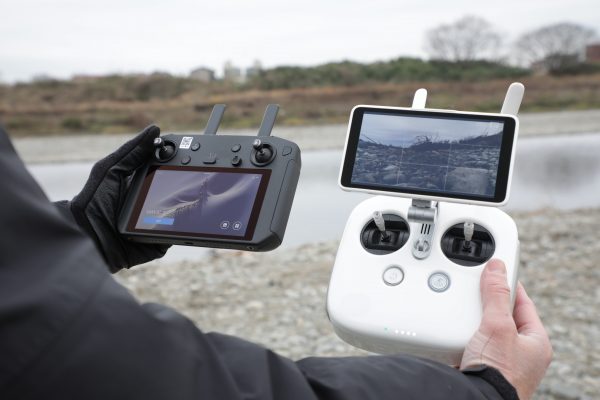
Yes. The Smart Controllers screen is the same one you will find on the CrystalSky (5.5″ High Brightness) and the Phantom 4 Pro RC with the screen.
Build Quality
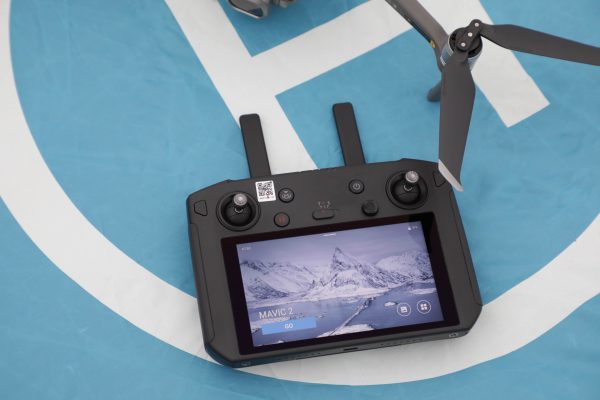
The build quality of the Smart Controller is excellent. It really does feel very robust in the hand and it certainly does have some weight to it. I actually like this added weight, because in a strange way it almost gives you a sense that you are operating something larger. Subconsciously, I found myself paying more attention to what I was doing than when I was using the standard remote.
I weighed the Smart Controller at 690g (24.3 oz). The standard Mavic 2 Pro remote controller weighs in at 320 g (11.28 oz), but if you combine it with say an Apple iPhone 7+ that weight increases to 510 g (17.98 oz), so in reality, the Smart Controller doesn’t actually weigh that much more than a standard remote with a smartphone.
HDMI Out, Microphone, and Speaker
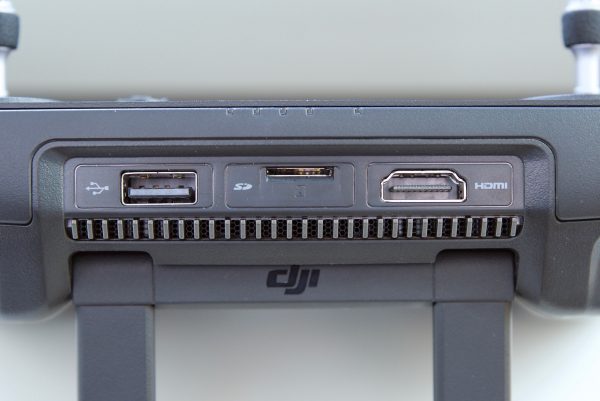
One of the things you won’t find on the standard Mavic 2 Pro or Mavic 2 Zoom controllers is an HDMI out port. The new Smart Controller can also playback video through the HDMI port at 4K 60fps with H.264 and H.265, or actually, provide a live output to a second screen. This is nice if you are working with a producer or director who wants to see what you are shooting without having to stand right next to you and peer over your shoulder. With the HDMI port you can simply connect up a monitor and then they can look at their own screen without having to bother you. You can adjust the HDMI settings in the Quick Settings menu. Here you can change the HDMI resolution, rotation, output mode, and screen zoom.
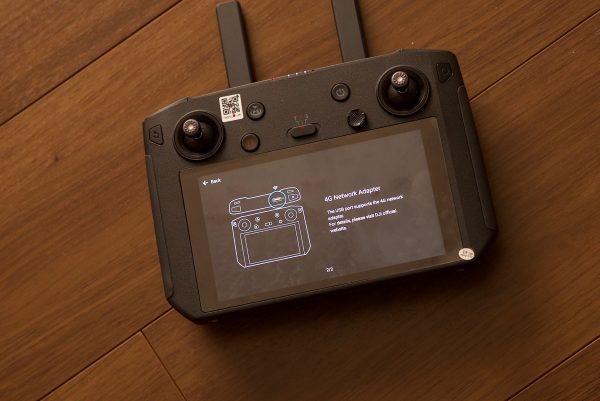
The USB output also supports a 4G network adapter. In theory, this means you could transmit high-quality video to a server or control the drone over long distances. Unfortunately, I couldn’t find out any more information about this.
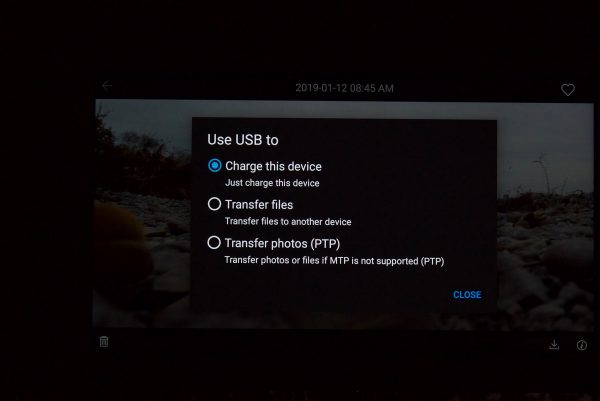
You can also directly hook up the Smart Controller to a computer via USB. This gives you three options: You can charge the Smart Controller, Transfer Files, or Transfer Photos via (PTP).
On top of Smart Controller are a series of blinking and flashing lights that provide you status information about what is going on.
- Yellow Blinking – Low battery warning
- Cyan Blinking – Control sticks are not in position
- Red Blinking – The temperature of the Smart Controller is too high, or the battery is low
- Steady Red – The Smart Controller is not connected
- Steady Green – The Smart Controller is connected
- Steady Yellow – The Smart Controller firmware update failed
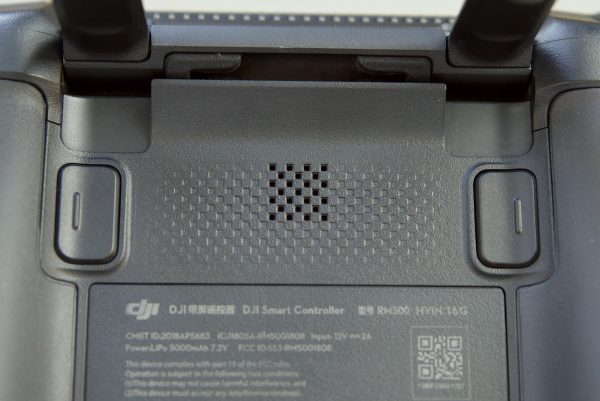
The DJI Smart Controller comes with a built-in microphone and speaker for expanded options such as live streaming.
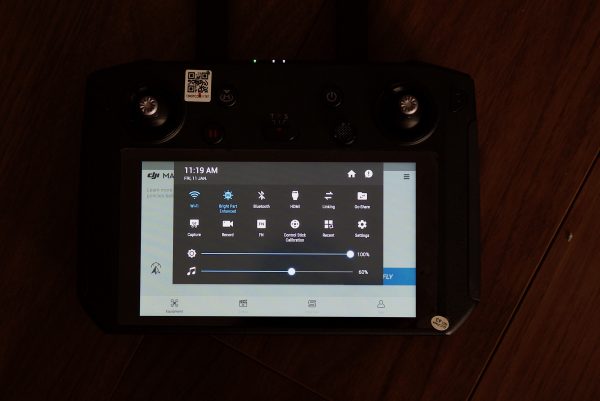
While there is an adjustment for the speaker’s volume I couldn’t find any menu items for the microphone. I’m still not sure how it works. No audio was being recorded onto any of my clips. I have a feeling this microphone feature may only work if you are doing live streaming. I will attempt to find out from DJI.
Android dashboard
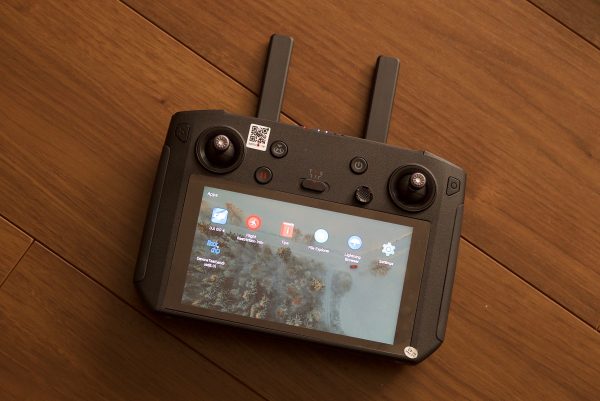
A customizable Android dashboard supports DJI GO 4, DJI Pilot, along with various third-party apps such as editing programs. The DJI GO 4 app also touts several new features including SkyTalk, that allows pilots to live stream the drone’s camera feed to social channels including Facebook, Instagram, and WeChat. The thing to note here is that the Smart Controller has no cellular connection so you would need to pair it with a smartphone to do any type of live streaming.
What is interesting is that users can download third-party apps through the built-in browser or install APK files from a microSD card. (DJI will not be liable for any permission or safety issues resulting from the use of third-party apps. If an installed third-party app prevents you from enjoying optimal use of your controller, DJI suggests you remove the app or restore the controller to the original factory settings.)
DJI GO-Share
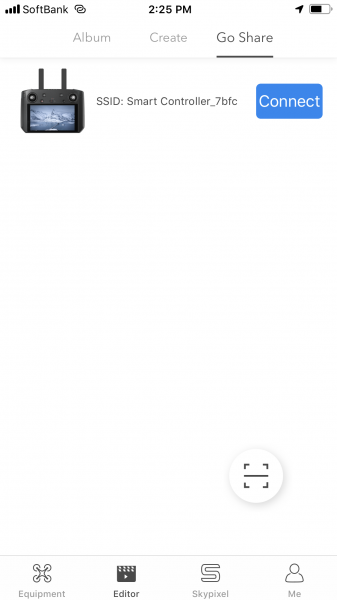
Another new feature is DJI GO-Share which allows for easy transfers of your images from the Controller to your mobile device. I found this worked reasonably well after you initially set it up. The only caveat currently is that you can only share videos and photos through DJI Go-Share, screenshots and screen recording can’t be shared.
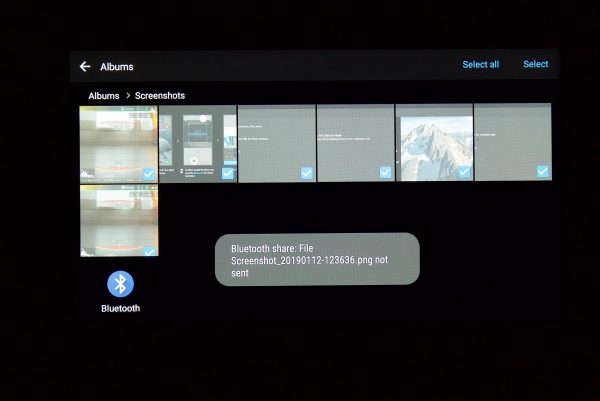
Speaking of sharing, I couldn’t get the Bluetooth sharing to work at all. Even when I paired up the Remote Controller to another device, every time I tried to share a file it wouldn’t work. Hopefully, this is just a bug with the current firmware on the Remote Controller. Unfortunately, because of this problem, I couldn’t move any screen recordings or screenshots that I captured off the Smart Controller.
Battery life
DJI claims that the Smart Controller gives you somewhere between 2-2.5 hours of battery life and the ability to operate in adverse temperatures as cold as -4°Fahrenheit and as hot as 104°Fahrenheit. It uses two built-in 2500 mAh Li-ion batteries and it takes around about an hour to charge. I found from my testing of the Smart Controller that I was getting well under 2 hours of battery life. Despite having a built-in battery, you can simultaneously charge and use the Smart Controller if you connect it up to a USB power supply.
The Smart Controller does seem to take quite a long time to charge up as well, it’s not nearly as quick as charging up the standard remote control that comes with the Mavic 2 Pro and Mavic 2 Zoom.
The built-in battery may not be to everyone’s liking. I would have liked to have seen DJI at least provide a battery plate so you could have the option of using an external battery or the internal one. Even though you can use an external USB power source, that usually makes for a messy setup, with no easy way of attaching the power supply to your controller. If you want a system where you can swap over batteries yourself, then the CrystalSky is a better option.
Firmware Updates
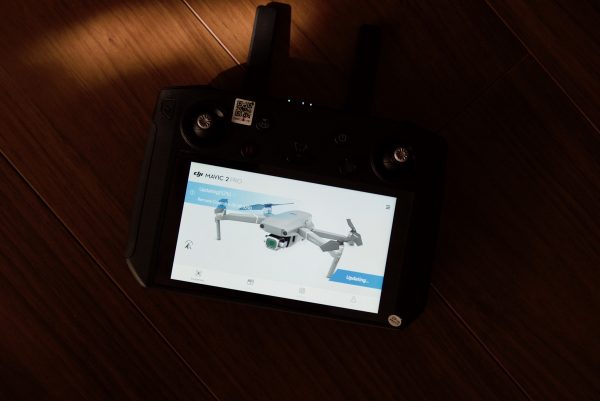
You can do firmware updates through the Smart Controller.
Pairing the Smart Controller with your drone
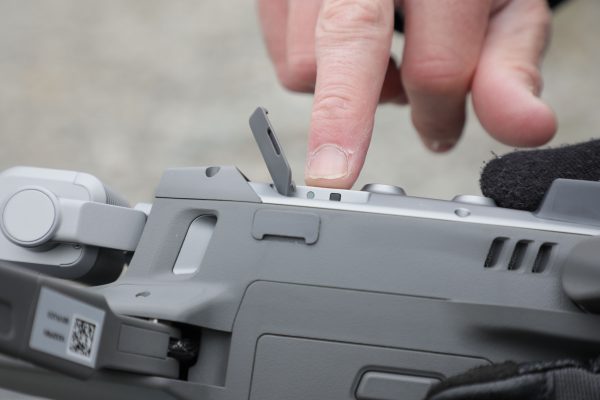
When you first get the Smart Controller you will need to pair it with your Mavic 2 Pro or Mavic 2 Zoom. This is a fairly easy process, but you do have to locate and press the little pairing button that is on the physical body of your Mavic 2. Once you have paired the aircraft you won’t have to do it again. It will automatically pair as soon as you turn on your drone and the Smart Controller.
Usability
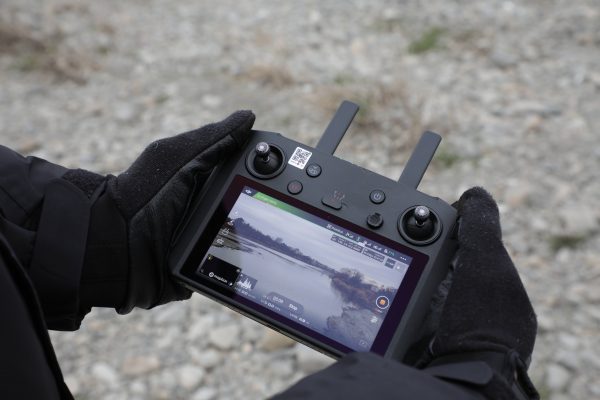
Usability should be the biggest factor for any drone operating system. You need to be able to access all of the controls, hold onto the controller securely and most importantly see the screen clearly. The controller also needs to be reliable and safe to use. I really like Smart Controller, in my personal opinion, it is a lot more comfortable to hold onto and operate than the standard Mavic 2 Pro or Mavic 2 Zoom controller.
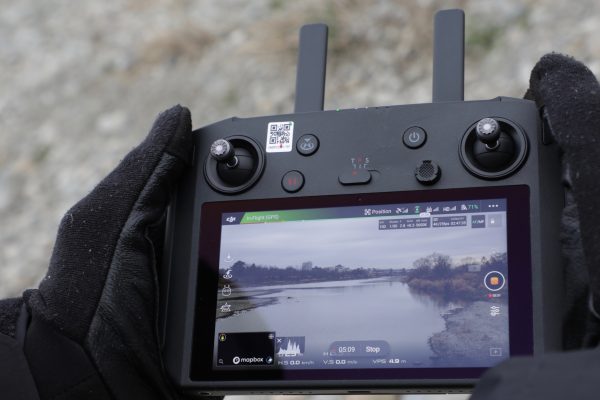
The screen is really nice, the colors look good and it’s easy to see all of your key information. It was a pleasant change looking at a screen that was a little bit larger than the smartphone I usually use for my Mavic 2Pro. You can comfortably hold the Smart Controller in the palm of your hands and your thumbs sit in a nice natural position for operating your drone. The dials for adjusting your cameras tilt and f-stop are a lot easier to locate and use than they are on the standard remote controller.

I also found that the touchscreen on the Smart Controller seemed to be easier to use than say an iPhone when you are wearing gloves. As it was freezing cold when we were testing out the Smart Controller, I couldn’t use it without wearing gloves. Not once did I have to take my gloves off to make any changes on the screen. In this case, I was using the Bright Tangerine ExoSkin gloves which work with touch screens.
Once I started using the Smart Controller I found it very hard to go back to the standard remote.
Button Combinations
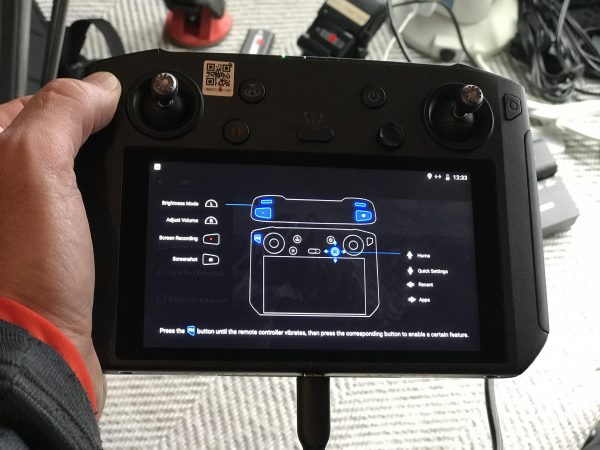
The Smart Controller also allows you to do Button Combinations. By tapping and holding the back button (the button to the left of the left side joysticks) you can quickly do things like take a screenshot, start a screen recording, adjust the screen brightness, or even adjust the speaker volume. The way you do this is by holding the back button until the Smart Controller vibrates, you are then presented with options and you then just click what you want to adjust or access.
Do not disturb
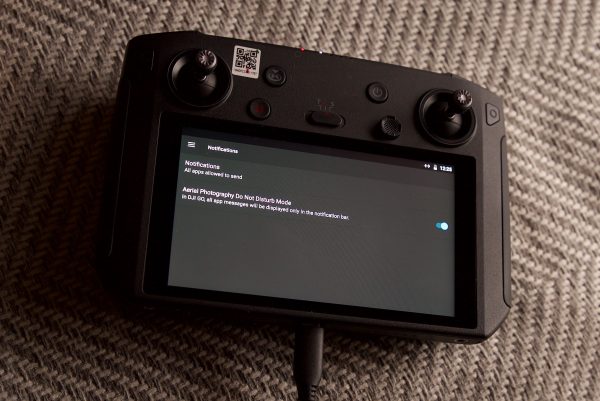
In a nice touch, DJI has incorporated a way to set a Do Not Disturb function so that when you are flying you won’t receive any notifications from third-party apps.
Flight Mode Switch
The Smart Controller has three flight modes, T-Mode, P-Mode, and S-mode.
T-mode (Tripod): The aircraft utilizes GPS and vision systems to locate itself, stabilize, and navigate between obstacles. In this mode, the maximum flight speed is limited to 2.2 mph (3.6 kph). The responsiveness to stick movements is also reduced for smoother, more controlled movement.
P-mode (Positioning): P-mode works best when the GPS signal is strong. The aircraft utilizes GPS, Vision Systems, and an Infrared Sensing System to stabilize, avoid obstacles, and track moving subjects. Advanced features such as TapFly and ActiveTrack are available in this mode.
S-mode (Sport): The handling gain values of the aircraft are adjusted to enhance aircraft maneuverability. Note that Vision Systems are disabled in this mode.
Regardless of the position the switch is in on the remote controller, the aircraft begins in P-mode by default. To switch flight modes, you need to go to camera view in DJI GO 4, tap and enable “Multiple Flight Modes”. After enabling multiple flight modes, toggle the switch to P and then to S or T to switch flight modes.
Is the screen big enough?
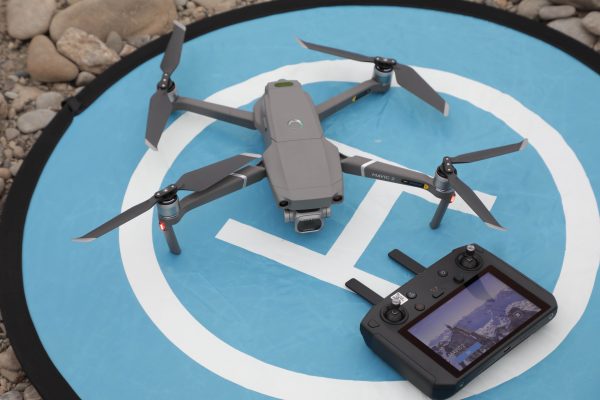
Sure, DJI could have made a larger Smart Controller with a bigger screen, but I think the 5.5″ size is a good compromise. You have to remember that this has been designed for use with the Mavic 2 range, and making a huge screen and controller takes away from the compact nature of those drones. It would not surprise me to see DJI eventually come out with various different models just like they did with the CystalSky monitors.
Is it bright enough to be used in direct sunlight?
I’m used to operating the Mavic 2 Pro with my iPhone 7+ and while that has a reasonably bright screen, you can’t use it in sunny conditions. Not being able to see what you are doing is extremely hazardous, especially when you are flying a drone. Safety should always be your main priority and if you can’t see what you are doing then that safety is being compromised.
I found the Smart Controller screen to be pretty good outdoors, even in bright conditions. It’s a massive step up over using a smartphone. In saying that, it could always be brighter. The screen is still subject to glare and reflections and if you use it in very sunny conditions, while you can still see what you are doing, it’s not bright enough to overpower the sun. In reality, the screen really does need a sunhood if you want to use it in very bright conditions.
As a comparison, the DJI CrystalSky 7.85″ Ultra-Bright Monitor is twice as bright and has an output of 2000 cd/m². Would I have preferred to have seen the Smart Controller with a 2000 cd/m² display, absolutely, but that would have probably massively reduced battery life. Who knows, maybe a larger Smart Controller with a 2000 cd/m² display is already in the works.
How does it compare to the standard Mavic 2 remote?
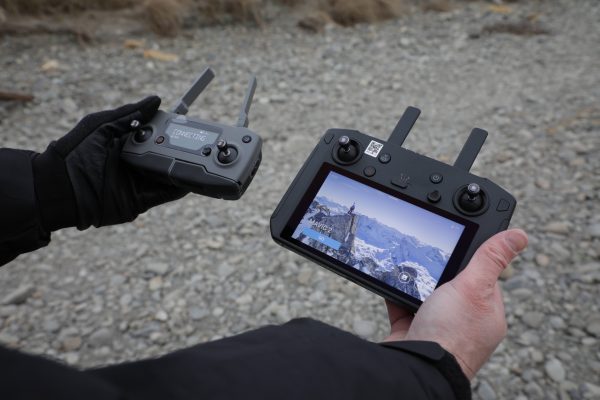
Apart from the obvious things like having its own screen, the DJI Smart Controller has quite a few features that you won’t find on the standard Mavic 2 Pro or Mavic 2 Zoom. As I’ve already mentioned you get an HDMI output, a microphone, a speaker, and Skytalk for streaming live to social media channels. As far as performance goes its very similar to the standard Mavic 2 Pro and Mavic 2 Zoom remote controllers, although I did find that both the joysticks and the control dials for adjusting the gimbals tilt etc. were slightly differnt. I think DJI hastweaked them slightly for easier use.
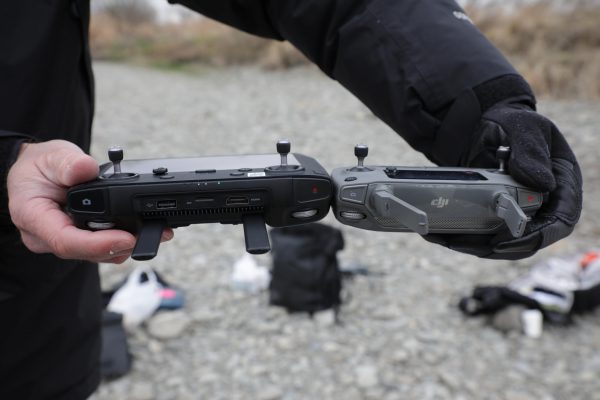
Another nice touch is that not only does the Smart Controller have internal storage just like the standard remote controller, but there is also a MicroSD card slot, so you can increase the internal storage from 16GB all the way up to 128GB.
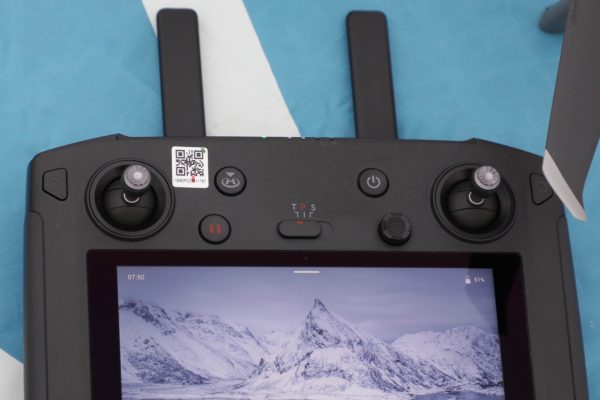
I also like that DJI has incorporated two additional buttons on either side of the joysticks. One is a return button and the other is a select button. These buttons (in conjunction with the joystick) allow you to access and change settings in the Homepage, File Manager, Gallery, App Center, System Settings, and Quick Settings while wearing not touchscreen gloves. Hopefully, DJI will eventually allow you to use these buttons to navigate through the Mavic’s shooting parameters without having to use the touch screen functionality of the screen. This will be great if you are wearing gloves and it also means you can make changes without having to take your fingers off the joystick controls.
There is also a function so you can screen record your Smart Controllers screen. This may be useful if you want to show someone how you did something or for reviewing your flight and seeing what moves worked and what moves didn’t.
Will it work with other DJI products?
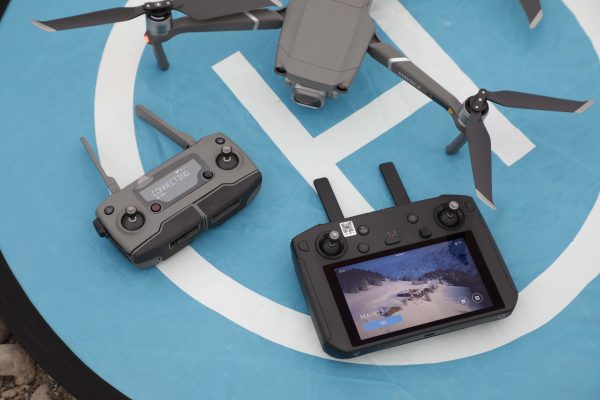
At this moment in time, the Smart Controller only works with the Mavic 2 Pro and Mavic 2 Zoom. From talking to DJI, it certainly seems that it is more than likely that we are going to see the Smart Controller become compatible with other DJI drones. Those “other drones” need to be using DJI’s OcuSync 2.0 video transmission system for that to happen. If you have an older drone, such as the original Mavic, there is no chance it will be compatible as it uses an older version of OcuSync. If DJI released a new drone that had OcuSync 3.0, they would have to make it backward compatible with OcuSync 2.0 for the Smart Controller to work. Whether a new version of OcuSync would involve hardware or a software change is unclear.
If you own multiple drones then getting a CrystalSky Monitor probably makes more sense, as it works with most of DJI’s drones.
Are there any downsides?
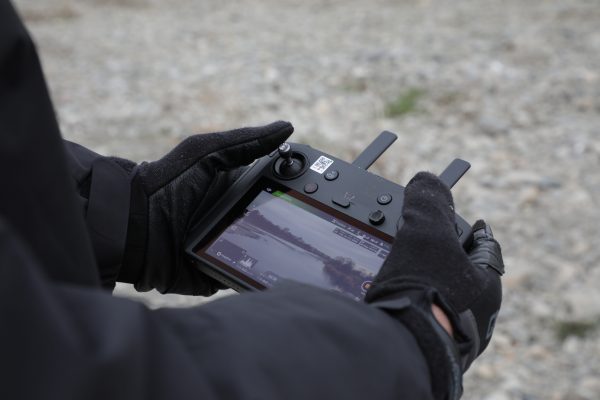
Well apart from the added cost, portability is the biggest downside. As it is physically larger and heavier then the standard remote controller you may well find it won’t fit into some of the more compact Mavic 2 Pro and Mavic 2 Zoom bags that are available. You also lose the telemetry that you would normally see on the Mavic remote controllers. Whether you care about this or not, will depend on the individual. Personally, I didn’t miss it. The screen is also on the bottom which may not be to everyone’s liking. I personally would have preferred to have the screen on top, but I didn’t find that to be a dealbreaker.
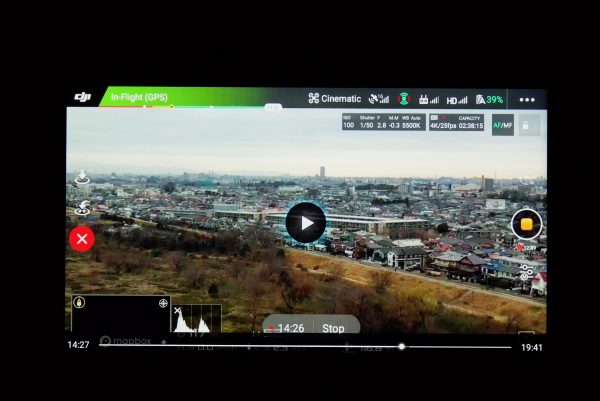
I couldn’t get the map to display on the Smart Controller, I think this is because you need to use your phone as a hotspot to get live map updates.
If you use the standard controller you can still see live data from your drone even if the DJI Go 4 app crashes. With the Smart Controller, if it crashes (and let’s face it, it is an Android platform), you are going to be in big trouble. With the standard controller, you still have the confidence that even if your phone or tablet crashes, you can still press the return to home button and you will still be receiving telemetry from the drone. This lets you take over manual control when you are close to the home point because your controller is still in contact with the drone. If the app crashes on the Smart Controller you have no telemetry and no way of knowing where it is. The problem here is that you may well end up having to reboot the whole controller in the event of a problem.
In some ways, the Smart Controller takes away from the compact and portable nature of the Mavic drones. This is another factor you need to take into consideration.
At this point in time, you also have no guarantees that the Smart Controller will be compatible with future drones. If DJI brought out a Mavic 3 later this year and the Smart Controller wasn’t compatible, you wouldn’t be very happy.
Is it worth the price?
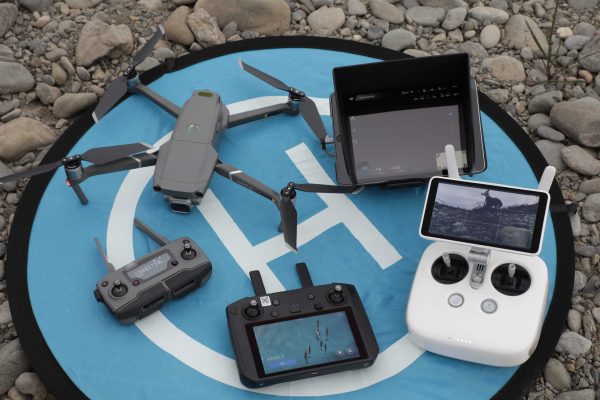
This is a hard question to answer because it really depends on how often and what you are doing with your drone. If you are just an occasional flyer then it’s probably not worth paying the extra $649 USD, but if you are making money off flying your drone, then the expense could easily be justified. The nice thing is, DJI gives you a lot of options for how and what you want to use to monitor and control your drone. You are not locked into just one way. $649 USD does seem like a lot of money and I imagine DJI will be making a pretty penny off selling these.
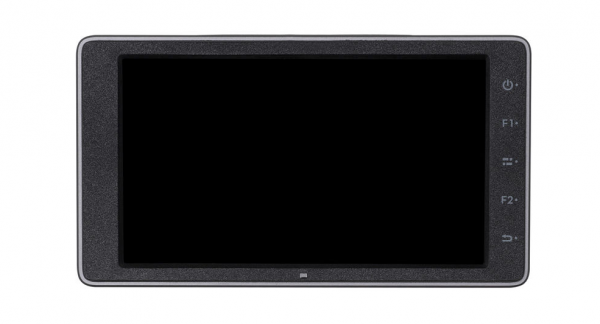
As a comparison, the DJI CrystalSky 5.5″ High-Brightness Monitor retails for $469 USD and then you have to buy the DJI CrystalSky Mounting Bracket for Select Controllers that adds another $79 USD. That would take your total out to $548 USD, which is $101 USD cheaper than a Smart Controller.
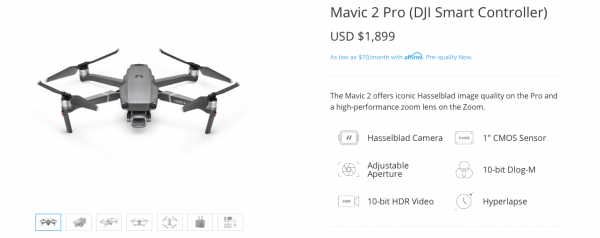
DJI is selling a combo package where you can get the Smart Controller with the DJI Mavic 2 Pro for $1,899 USD, so that’s $249 USD cheaper than buying the Mavic Pro 2 and the Smart Controller separately. A deal is also available for the Mavic 2 Zoom.
You could also buy an iPad or use an existing one that you already own and then purchase a mounting bracket.
Conclusion
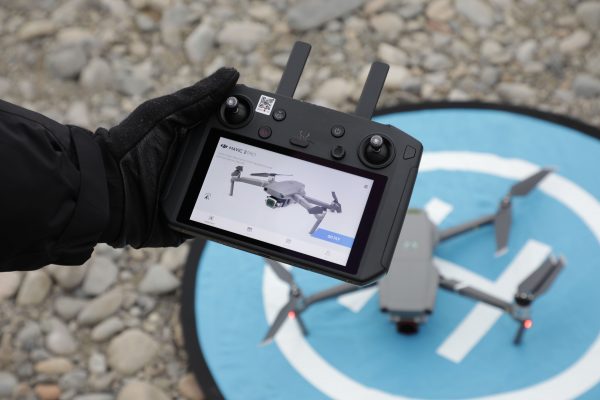
I was a little skeptical about whether the $649 USD cost was justified for a remote controller for a drone that costs $1,500 USD. As a professional shooter who makes money from flying drones, I personally think that the cost is more than justified. Is it overpriced for what it is? Probably, but I think working professionals will still be happy enough to pay the cost. The ability to have something that is not only a lot easier to see but also to operate is a big deal. Once I used the Smart Controller I found it very hard to go back to the original remote. It may be purely a coincidence but I found that my drone skills actually improved from using the Smart Controller. I think a lot of this may have been from the subconscious effect of feeling more confident using the Smart Controller as it seemed to make the whole flying experience easier.

